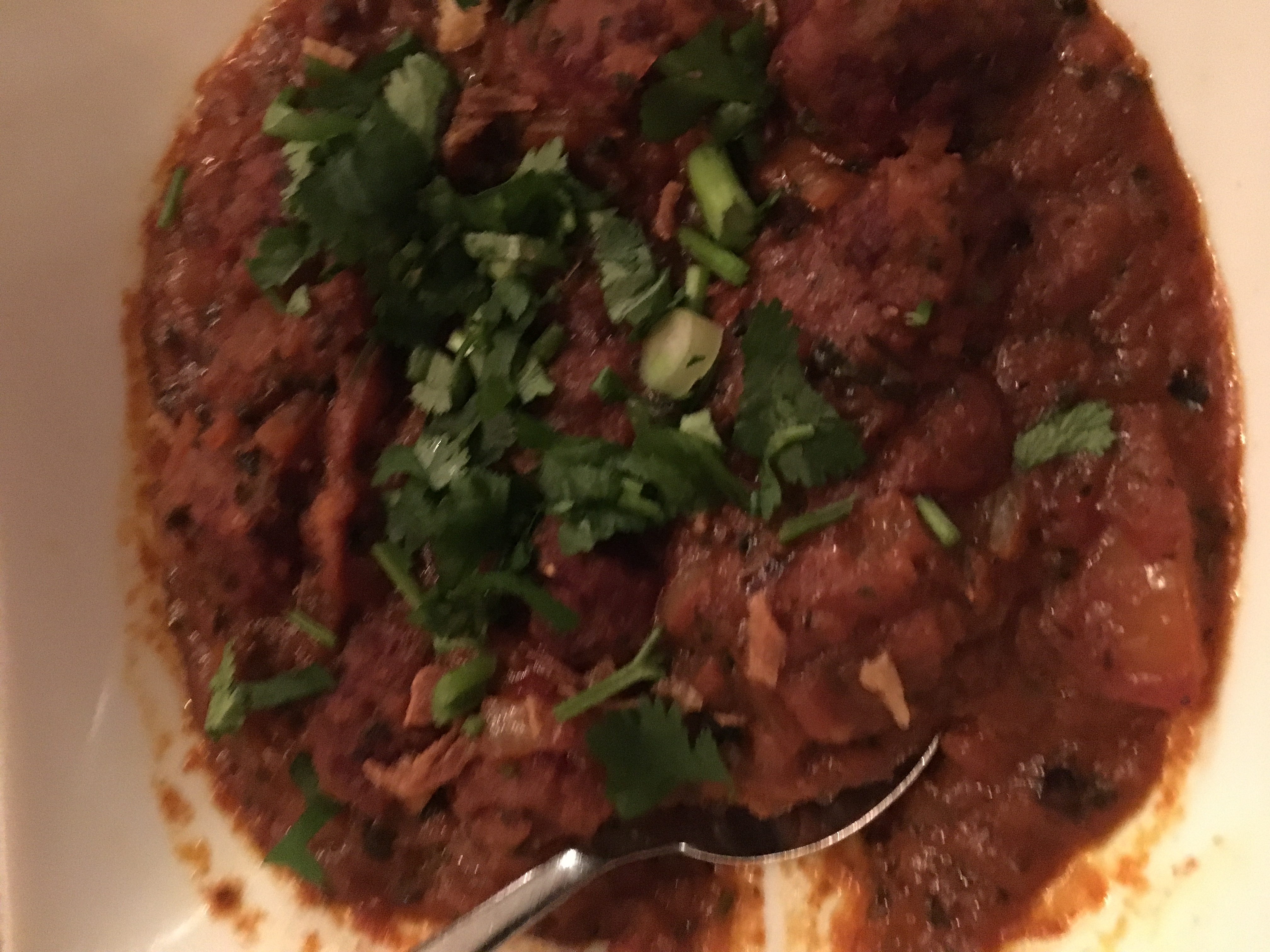Indian restaurants have evolved to present themselves in vibrant new ways, partly through culinary experiments but as often in the form of decor representative both of the modernisation of the Indian subcontinent and new thinking to appeal to audiences bored by the flock wallpaper and dodgy carpet cliche. Nor is this trend peculiar to the great metropolis, as witnessed by a recent trip with an old friend to her local curry house in Stourport, Worcestershire, heart of the Black Country.
Namaste, you will recall, is a warm greeting in ancient Sanskrit and modern Hindi, meaning, according to the restaurant’s website, “gracious hello.” The warmth of welcome is at least in part due to jovial staff, of whom more shortly, but what captures the attention most in an old building that might at some point have been a pub was a design that clearly had been commissioned by a specialist in restaurant design.
Cue anecdote: I once took a ride with a travelling restaurant designer across much of Texas and Arizona. At one point we went to a pizza restaurant in Tucson, Az, which caused the chap to demonstrate his credentials by taking to pieces (not literally, though he might have done had we stayed long enough) every aspect of the decor, furniture selection, waiter’s clothing and pretty much every other aspect of this joint. Shame the owner never got to hear of all that was wrong with his eatery.
I wonder what the designer would have made of Namaste, from its plush seats and heavy red velvet curtains, mini-chandeliers, white walls with some ironically new-flock wallpaper, plus a colourful wall-cloth featuring an elephant, a flower on most tables? Almost theatrical, which is not a bad analogy for most restaurants, even though the real action that counts goes on backstage.
While you’re pondering that conundrum, let’s consider this friendly, and as the evening wore on, increasingly busy little eatery. Busy, says my friend, because it’s the best in the area – and it’s true that Namaste scores highly for service with a smile, above average dishes and good value. However, to do well for any length of time in a very competitive market requires consistency and the ability to step beyond the average curry house, so it is to the credit of Namaste that they have stayed ahead of the market for some years.
We chose to drink a pint apiece of remarkably cheap, by restaurant standards, draft Cobra. My friend is not known for drinking exploits, so a pint was a bit heady – though I’m happy to report she downed it successfully and without mishap! We perused the menu while nibbling on popadoms and the usual array of chutneys and sauces, at which point my friend, not for the first time decided to leave to me the ordering.
Starter one was nargis kebab, a double-egged Indian variant on Scotch egg, whereby you slice through an omelette netting to get to your spicy-coated egg with soft yolk. This was a clear winner, and as with both starters was garnished with salad and a small slick of mint and chilli sauces.
Starter two is described as “tamarind glazed tikka tikka” – tandoori cooked chunks of chicken, lamb, onion and pepper, coated in fruity sauce. Perhaps not quite as successful as the eggy kebab but enjoyable nonetheless.
For mains I tried to go off-piste and select dishes which were at least slightly unusual. Jaal Kufta Bhuna succeeds in this respect by marrying a bhuna sauce to tandoori meatballs, which dish prompted a discussion between us on how meatballs have become in the British psyche the preserve of Italian cuisine (with tomato sauce and spaghetti), but are in fact found widely elsewhere (think Spanish tapas, Scandinavian meatballs in gravy etc.) Why not an Indian variant, kofta (usual spelling) being widely available and rather delicious?
These meatballs were undoubtedly tasty and with just a hint of heat that tingled the taste buds. They came heavily laden with finely chopped onion and thick, brown sauce – nothing very subtle about their presentation, concluding with the regulation sprinkle of chopped coriander.
Nor indeed with chicken tikka Tetul Takari, another dish employing the underestimated tamarind. Did you know this fruit is a prime ingredient in good old English brown sauce? Other uses include traditional medicine and metal polish, but we won’t dwell on those. This was also a well-seasoned dish with good spicing but not the same tongue-tingle factor.
To accompany the dishes we had a pilau rice, which our waiter presented artistically in a line down the plate, creating room for one sauce on each side, plus my only real mistake of the evening. Keema nan is fine, but I chose keema nan with cheese, assuming it to include in the stuffing some paneer. Alas, the poor nan was drowned with that most awful British invention, cheap cheddar, and melted like a poor man’s pizza. This may have its fans in the Black Country, but I would have much preferred the authentic version with paneer.
But I can’t complain, since the meal was a birthday treat from my friend, and very welcome it was too – helped by the charming staff and warm ambience of Namaste. Thank you, Ali!













